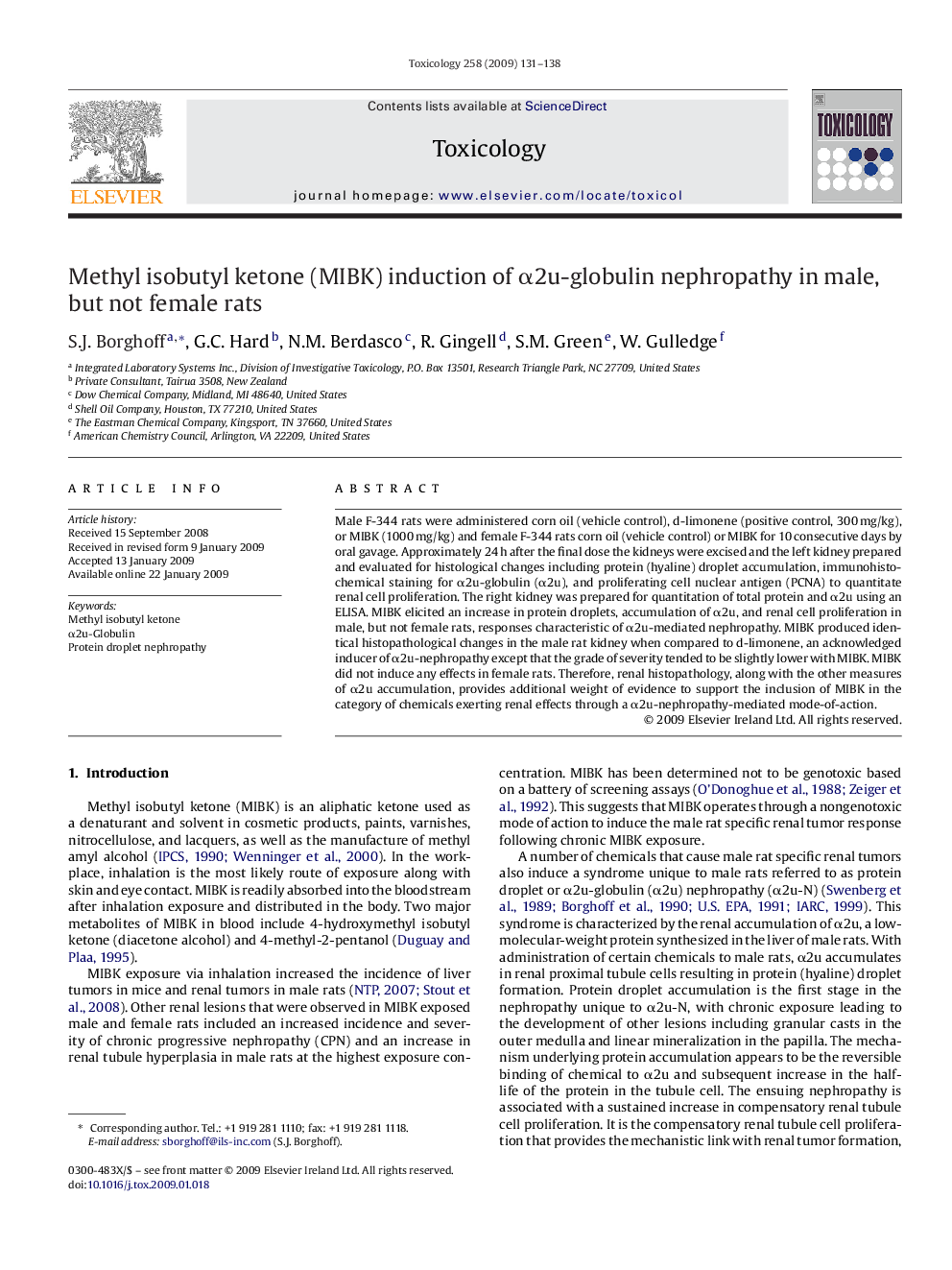| Article ID | Journal | Published Year | Pages | File Type |
|---|---|---|---|---|
| 2596711 | Toxicology | 2009 | 8 Pages |
Abstract
Male F-344 rats were administered corn oil (vehicle control), d-limonene (positive control, 300 mg/kg), or MIBK (1000 mg/kg) and female F-344 rats corn oil (vehicle control) or MIBK for 10 consecutive days by oral gavage. Approximately 24 h after the final dose the kidneys were excised and the left kidney prepared and evaluated for histological changes including protein (hyaline) droplet accumulation, immunohistochemical staining for α2u-globulin (α2u), and proliferating cell nuclear antigen (PCNA) to quantitate renal cell proliferation. The right kidney was prepared for quantitation of total protein and α2u using an ELISA. MIBK elicited an increase in protein droplets, accumulation of α2u, and renal cell proliferation in male, but not female rats, responses characteristic of α2u-mediated nephropathy. MIBK produced identical histopathological changes in the male rat kidney when compared to d-limonene, an acknowledged inducer of α2u-nephropathy except that the grade of severity tended to be slightly lower with MIBK. MIBK did not induce any effects in female rats. Therefore, renal histopathology, along with the other measures of α2u accumulation, provides additional weight of evidence to support the inclusion of MIBK in the category of chemicals exerting renal effects through a α2u-nephropathy-mediated mode-of-action.
Keywords
Related Topics
Life Sciences
Environmental Science
Health, Toxicology and Mutagenesis
Authors
S.J. Borghoff, G.C. Hard, N.M. Berdasco, R. Gingell, S.M. Green, W. Gulledge,
